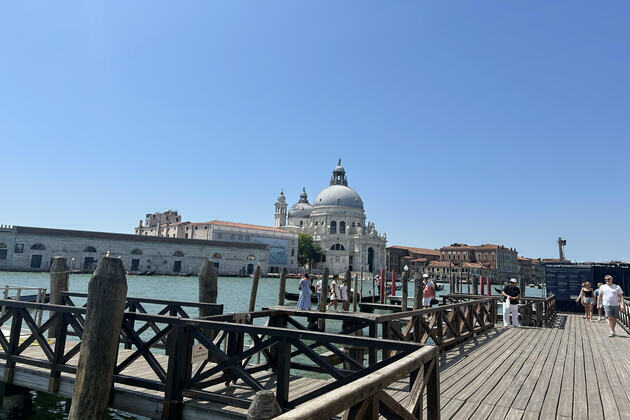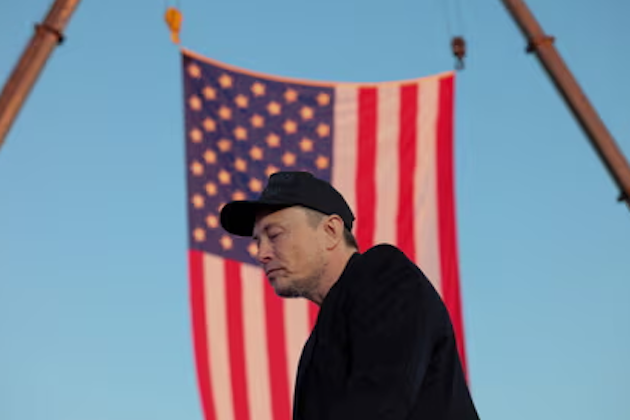What would it feel like to touch a cloud?
The Conversation
28 May 2020, 18:10 GMT+10

Curious Kids is a series for children of all ages. If you have a question you'd like an expert to answer, send it to [email protected].
You might already know how it feels to touch a cloud without realizing it.
If you've ever been outside on a foggy day, you've essentially been inside a cloud, just one very close to the ground instead of high in the sky. Fog and clouds are both made of tiny water droplets - like the ones you can sometimes see or feel in a hot, steamy shower.
Clouds form through evaporation and condensation. Water in lakes, rivers, oceans or puddles evaporates into water vapor as the sun heats it up. You can evaporate water yourself by boiling it - watch it disappear as vapor.
Water vapor, which is invisible, naturally rises up from the Earth's surface into the atmosphere as warm bubbles, like the bubbles you'd see rising in a lava lamp. The higher it goes, the more it cools, until eventually the water vapor condenses back into liquid water.
Clouds are made of millions of these tiny liquid water droplets. The droplets scatter the colors of the sunlight equally, which makes clouds appear white. Even though they can look like cushy puffballs, a cloud can't support your weight or hold anything up but itself.
The process of evaporation and condensation in the atmosphere is similar to what happens in your bathroom when you take a hot shower: Warm water evaporates and then condenses back into water on the cold mirror.
Water vapor does not condense spontaneously. It needs tiny particles or a surface - like your bathroom mirror - on which to form a drop. Atmospheric scientists like me call these tiny particles cloud condensation nuclei, or CCN for short. These CCN are just dirt or dust particles that have been lifted by the wind and are floating around in the atmosphere.
Does that mean that places with a lot of dust and pollution, like cities, have more drops than clean places? Researchers have found more tiny droplets and more clouds in areas where there are a lot of these cloud condensation nuclei, while in areas without them fewer clouds are observed, like over the ocean or the Arctic.
As cloud droplets rise in the atmosphere, the air temperature decreases. The tiny cloud droplets start to freeze when the temperature drops below below 32 degrees Fahrenheit (0 degrees Celsius). It's the exact same process as making ice cubes in a freezer.
The frozen droplets are now ice crystals. They continue to grow in size as water vapor turns into ice and sticks onto them. Scientists call this process of a gas turning into a solid "deposition." It creates the beautiful branched ice crystals that you find in snowstorms.
Steady updrafts of air keep these very light water droplets or ice crystals floating in the cloud. So how do they turn into rain and snow and fall to the ground? Easy, they join forces.
Larger droplets collect smaller droplets on their way to the ground as raindrops. Snow grows in a similar way, with the crystals sticking to each other. Their little arms can interlock to form a bigger snowflake. When water droplets merge with ice crystals, that makes hail.
Rain droplets grow on their way down to the ground, eventually becoming unstable and breaking up. The largest raindrop that researchers have found was about a third of an inch across. Some giant snowflakes have been reported to be as big as 6 inches across. And the biggest piece of hail? In 2010, someone found a hailstone 8 inches in diameter in South Dakota and took a photo - so scientists know it was real.
That would be a lot more painful to collide with than a wispy cloud of water vapor.
Hello, curious kids! Do you have a question you'd like an expert to answer? Ask an adult to send your question to [email protected]. Please tell us your name, age and the city where you live.
And since curiosity has no age limit - adults, let us know what you're wondering, too. We won't be able to answer every question, but we will do our best.
Author: Katja Friedrich - Associate Professor of Atmospheric and Oceanic Sciences, University of Colorado Boulder 
 Share
Share
 Tweet
Tweet
 Share
Share
 Flip
Flip
 Email
Email
Watch latest videos
Subscribe and Follow
Get a daily dose of Denver Sun news through our daily email, its complimentary and keeps you fully up to date with world and business news as well.
News RELEASES
Publish news of your business, community or sports group, personnel appointments, major event and more by submitting a news release to Denver Sun.
More InformationInternational
SectionDalai Lama to address Buddhist conference, reveal succession plan
DHARAMSHALA, India: The Dalai Lama is set to address a significant three-day conference of Buddhist leaders this week, coinciding with...
US Supreme Court backs Texas efforts to shield minors online
WASHINGTON, D.C.: In a significant ruling last week, the U.S. Supreme Court upheld a Texas law requiring age verification for users...
Turkey, France battle wildfires amid early Europe heatwave
ISTANBUL/PARIS/BRUSSELS: As searing temperatures blanket much of Europe, wildfires are erupting and evacuation orders are being issued...
Venetians protest Bezos wedding with march through the town
VENICE, Italy: Over the weekend, hundreds of protesters marched through the narrow streets of Venice to voice their opposition to billionaire...
New French law targets smoking near schools, public spaces
PARIS, France: France is taking stronger steps to reduce smoking. A new health rule announced on Saturday will soon ban smoking in...
Trump hints at DOGE investigation of Musk subsidies
WASHINGTON, DC - U.S. President Donald Trump on Tuesday claimed Elon Musk's success has been built on government subsidies. Without...
Colorado
SectionTrump hints at DOGE investigation of Musk subsidies
WASHINGTON, DC - U.S. President Donald Trump on Tuesday claimed Elon Musk's success has been built on government subsidies. Without...
Fox faces $787 million lawsuit from Newsom over Trump phone call
DOVER, Delaware: California Governor Gavin Newsom has taken legal aim at Fox News, accusing the network of deliberately distorting...
Empire FC crowned champions of BDFA "C" Division, secures promotion to "B" Division
Bengaluru (Karnataka) [India], July 1 (ANI): Empire FC has scripted a dream season by clinching the Bengaluru District FA 'C' Division...
UAE condemns terrorist attack in US State of Colorado
ABU DHABI, 2nd June, 2025 (WAM) - The United Arab Emirates has condemned in the strongest terms the terrorist attack that occurred...
Colorado funeral home owner get 20 years for illegally warehousing corpses
DENVER (CN) - When Tanya Wilson's mother died, she and her brother took seriously their responsibility to send off Yong Anderson into...
Inbox: His initial burst separates him
A fast start would definitely go a long way Mike Spofford John from Jordan, MN I can't be the only one that noticed you missed...












